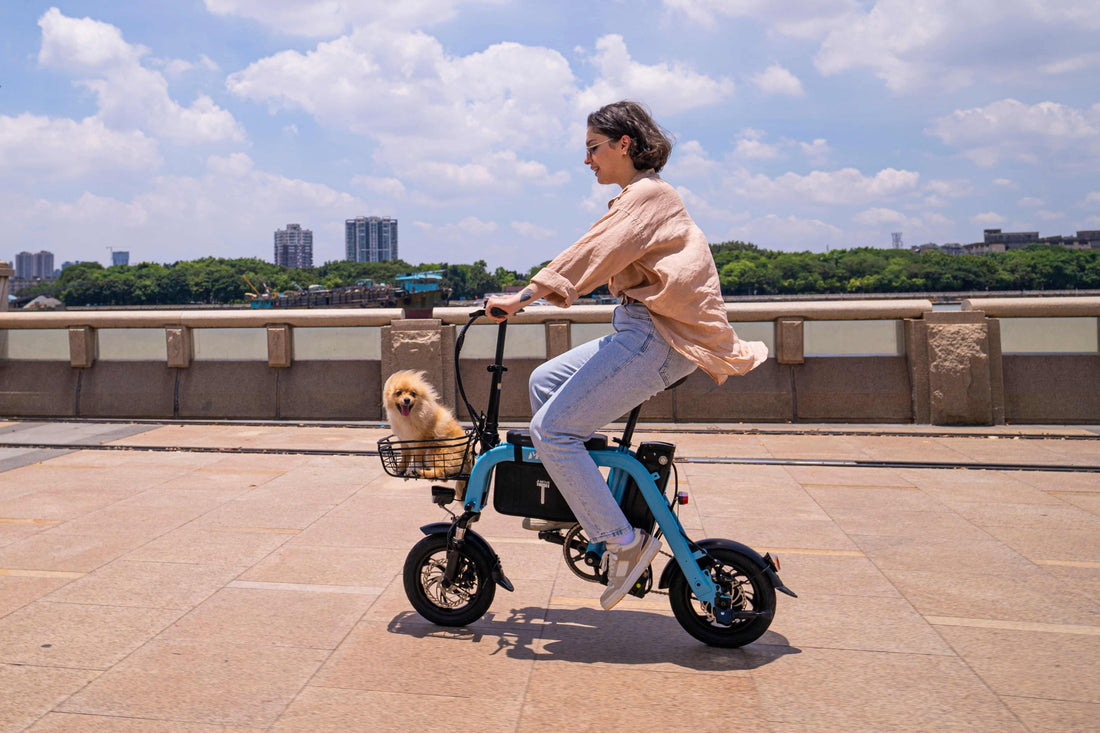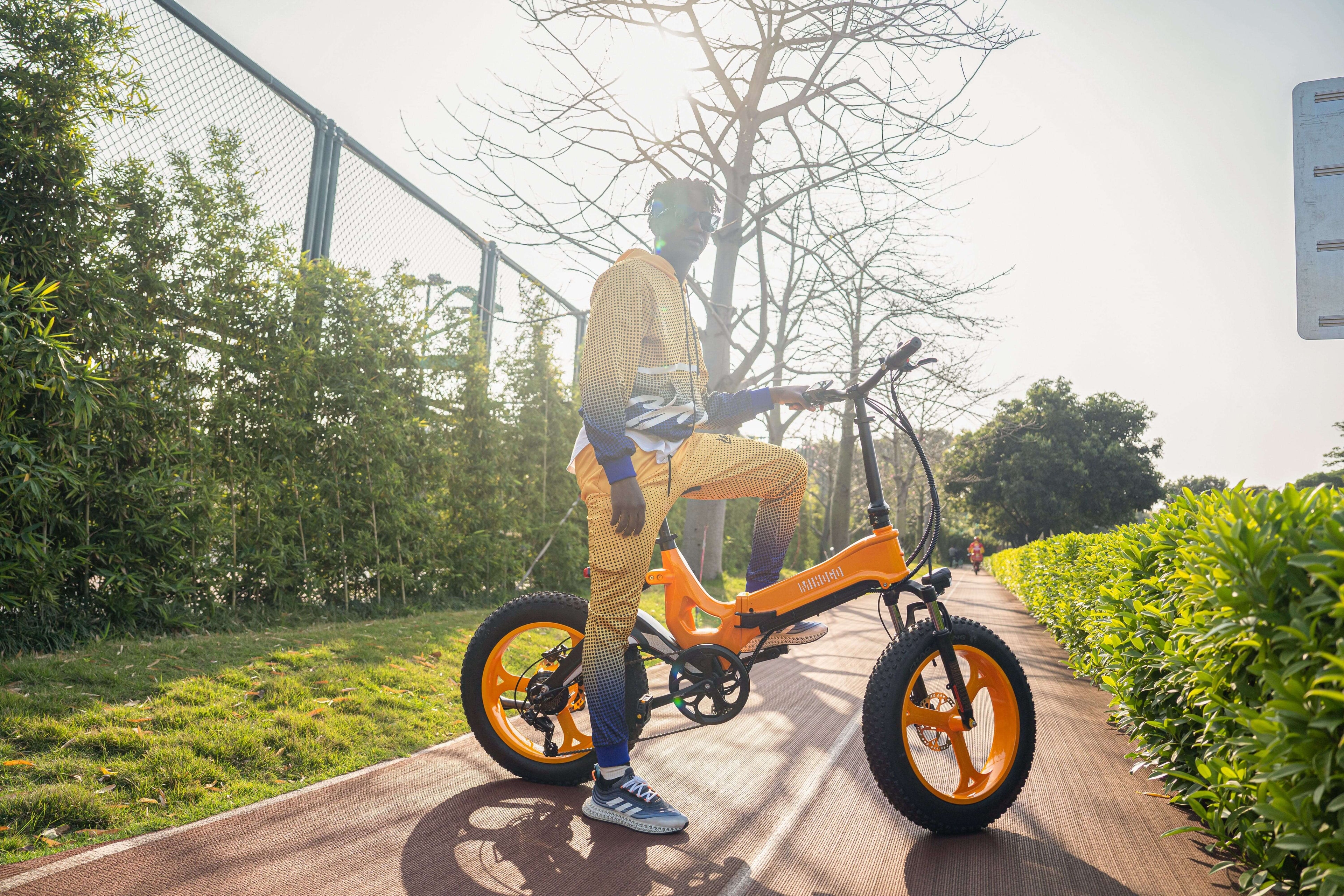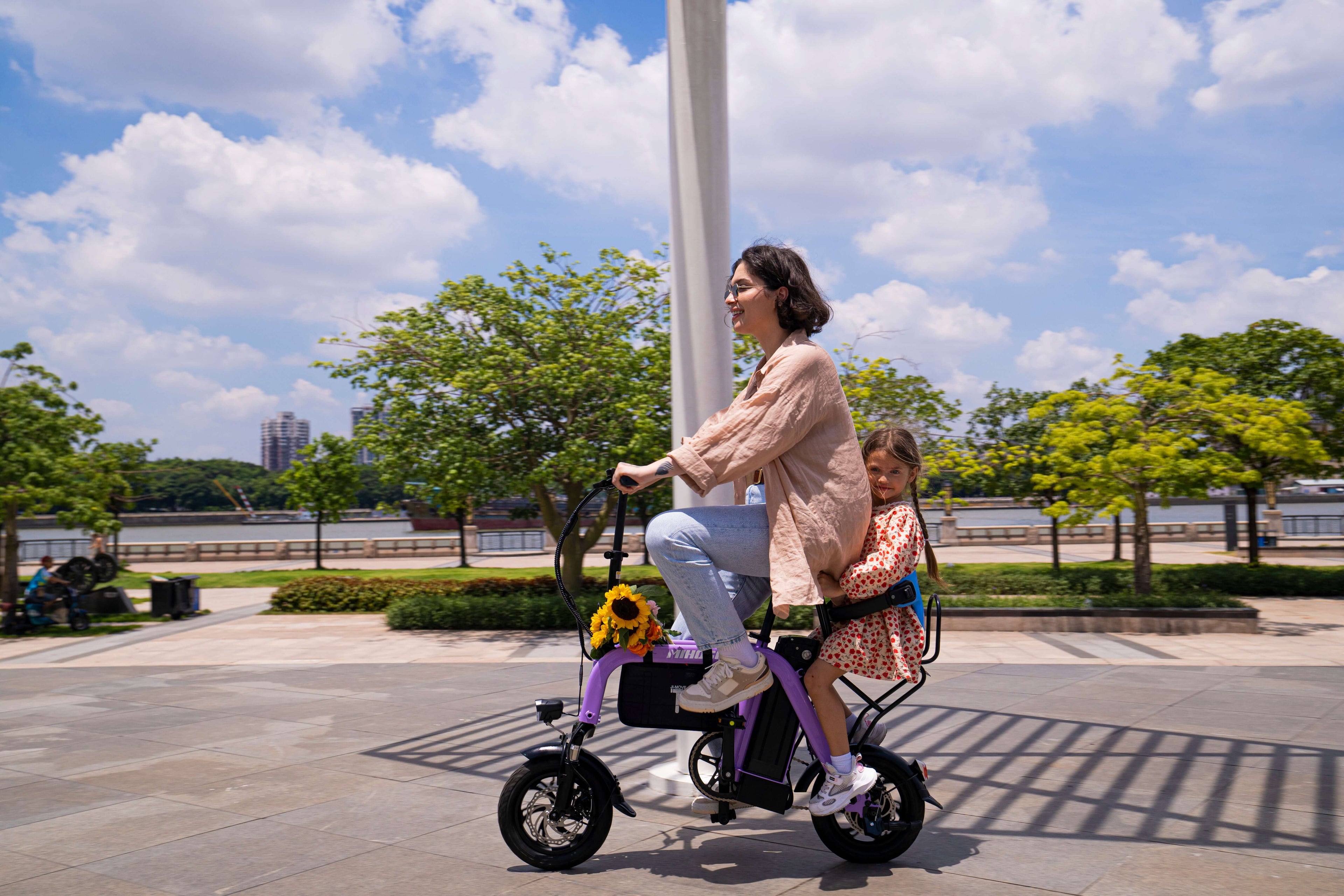Understanding Normal vs. Problematic E-Bike Motor Sounds
Before diving into troubleshooting, it's important to understand that all e-bike motors produce some level of sound during operation. Mihogo electric bikes use high-quality hub motors that naturally generate a low humming or whirring noise, especially during acceleration or when climbing hills.
Normal Motor Sounds:
- Low humming or whirring during acceleration
- Gentle buzzing when the motor engages
- Soft clicking from the freewheel mechanism when coasting
- Increased noise under load (hills, heavy cargo, or high speeds)
Concerning Motor Sounds:
- Grinding or scraping noises
- Loud clicking or rattling sounds
- High-pitched squealing or whining
- Intermittent chugging or irregular noises
- Sudden changes in motor sound patterns
Common Causes of E-Bike Motor Noise
Understanding the root causes helps you target the right solution. Here are the most frequent culprits behind motor noise in electric bikes:
1. Loose Components and Hardware
Symptoms: Rattling, clicking, or vibrating sounds Affected Models: All Mihogo models (Air750 Max, ONE Utility, RX 2.4, Mini)
The most common cause of motor noise is loose mounting hardware. With regular riding, especially on rough terrain, motor mounting bolts, wheel nuts, and housing screws can gradually loosen.
Quick Fix:
- Power off your Mihogo e-bike completely
- Check and tighten all motor mounting bolts
- Inspect wheel axle nuts for proper tightness
- Ensure battery mount is secure
2. Worn or Damaged Motor Bearings
Symptoms: Grinding, rough rotation, or humming that worsens over time Common in: High-mileage bikes or those exposed to water/dirt
Motor bearings allow smooth rotation of internal components. When they wear out, you'll hear grinding sounds, especially noticeable when manually spinning the wheel.
3. Internal Gear Wear (Geared Hub Motors)
Symptoms: Clicking, grinding, or inconsistent power delivery Most Relevant for: Air750 Max (750W) and ONE Utility (750W) models
Geared hub motors use internal planetary gears to multiply torque. Over time, these gears can wear down, creating noise and reducing efficiency.
4. Electrical Issues
Symptoms: Irregular chugging, stuttering, or intermittent noise Causes: Loose wiring, controller problems, or hall sensor malfunctions
Electrical problems can cause the motor to run rough, creating unusual noise patterns that vary with power output.
5. Debris and Contamination
Symptoms: Scraping, grinding, or periodic rattling Common After: Off-road riding, beach trips, or wet conditions
Sand, dirt, and small debris can enter the motor housing, causing components to grind against foreign particles.
Model-Specific Troubleshooting for Mihogo E-Bikes
Mihogo Air750 Max - Carbon Fiber Powerhouse
Motor: 750W hub motor | Range: 121 miles | Top Speed: 25 MPH
Best Terrain: Road cycling, long-distance commuting, smooth trails Common Noise Issues:
- High-power motor may be louder under maximum load
- Carbon frame can amplify motor resonance
Specific Troubleshooting:
- Check carbon frame mounting points for proper torque
- Inspect for debris around the rear hub motor
- Verify battery connections are secure in the integrated mount
Mihogo ONE Utility - Versatile Workhorse
Motor: 750W hub motor | Range: 167 miles | Top Speed: 25 MPH
Best Terrain: Urban commuting, cargo hauling, mixed surfaces Common Noise Issues:
- Increased noise when carrying heavy loads
- Utility accessories may cause additional rattling
Specific Troubleshooting:
- Check cargo rack and accessory mounting bolts
- Inspect motor under load (normal increase in noise is expected)
- Ensure proper tire pressure to reduce motor strain
Mihogo RX 2.4 - Compact Folding Commuter
Motor: 500W hub motor | Range: 40 miles | Top Speed: 23 MPH
Best Terrain: City streets, short commutes, indoor storage situations Common Noise Issues:
- Folding mechanisms may create additional sounds
- Compact design can make motor noise more noticeable
Specific Troubleshooting:
- Check folding joint tightness and lubrication
- Inspect motor mounting in the compact frame design
- Verify proper wheel alignment after folding/unfolding
Mihogo Mini - Nimble Urban Explorer
Motor: 350W hub motor | Range: 62 miles | Top Speed: 21.9 MPH
Best Terrain: Urban environments, bike paths, leisurely rides Common Noise Issues:
- Smaller motor may work harder, creating more noise
- Compact size amplifies any loose components
Specific Troubleshooting:
- Pay special attention to spoke tension (smaller wheels = higher stress)
- Check for proper motor cooling during extended rides
- Inspect all connections in the compact electrical system
Step-by-Step Noise Diagnosis Process
Safety First
Always power off your Mihogo e-bike and remove the battery before performing any maintenance. Work in a well-lit area and wear insulated gloves when handling electrical components.
Step 1: Listen and Locate
- Power on your e-bike (with battery reinstalled)
- Engage the motor at low power
- Listen carefully to pinpoint where the noise originates
- Note when it occurs (acceleration, constant speed, coasting)
Step 2: Visual Inspection
- Check motor mounting bolts for looseness
- Inspect wheel alignment and spoke tension
- Look for visible debris around the motor housing
- Examine electrical connections for corrosion or damage
Step 3: Manual Testing
- Lift the rear wheel (for rear hub motors)
- Spin the wheel by hand and listen for grinding
- Check for excessive play in the wheel bearings
- Test smooth rotation without electrical power
Step 4: Electrical System Check
- Inspect all wire connections to the motor
- Check for damaged cables or pinch points
- Verify controller connections are clean and tight
- Test hall sensor function (if comfortable with electrical work)
DIY Repair Solutions
Quick Fixes You Can Do at Home
Tightening Loose Components
Tools Needed: Allen keys, adjustable wrench, torque wrench (if available)
- Secure motor mounting bolts to manufacturer specifications
- Tighten wheel axle nuts evenly
- Check and tighten accessory mounts
Cleaning and Debris Removal
Tools Needed: Compressed air, soft brush, bike-specific cleaner
- Power off and remove battery
- Use compressed air to blow out debris
- Gently brush away visible contaminants
- Avoid high-pressure water around electrical components
Basic Electrical Maintenance
Tools Needed: Contact cleaner, dielectric grease, multimeter
- Clean electrical connections with contact cleaner
- Apply dielectric grease to prevent corrosion
- Check wire continuity with a multimeter
When to Seek Professional Help
Contact a qualified e-bike technician if you experience:
- Persistent grinding after basic maintenance
- Electrical issues beyond basic connections
- Internal motor problems requiring disassembly
- Safety concerns about motor function
Preventive Maintenance for Quiet Operation
Regular Maintenance Schedule
Weekly Checks
- Battery charge level and connection security
- Tire pressure appropriate for your Mihogo model
- Quick listen for new or unusual sounds
- Visual inspection for loose components
Monthly Maintenance
- Clean motor area and remove debris
- Check and tighten all mounting bolts
- Inspect electrical connections for corrosion
- Lubricate chain and drivetrain components
Seasonal Service
- Professional tune-up every 500-1000 miles
- Deep cleaning of electrical components
- Battery health check and calibration
- Comprehensive safety inspection
Terrain-Specific Care Tips
For Urban Commuting (All Models)
- Regular cleaning to remove road salt and grime
- Frequent brake inspection due to stop-and-go traffic
- Chain maintenance for consistent performance
For Off-Road Adventures (Air750 Max, ONE Utility)
- Extra cleaning after dusty or muddy rides
- Check for trail debris in motor housing
- Inspect frame and components for impact damage
For Beach and Coastal Riding (All Models)
- Immediate cleaning after salt air exposure
- Extra attention to electrical connections
- Corrosion prevention with dielectric grease
Advanced Troubleshooting Techniques
Hall Sensor Testing
Hall sensors control motor timing and can cause noise if malfunctioning:
- Use a multimeter to test sensor output
- Check for 5V power supply to sensors
- Verify sensor signal changes as wheel rotates
Controller Diagnostics
Modern e-bike controllers often have diagnostic modes:
- Check error codes on your Mihogo display
- Test motor function in different assist levels
- Monitor power output consistency
Motor Bearing Replacement
For persistent bearing noise:
- Remove motor from wheel (professional job)
- Replace worn bearings with quality components
- Reassemble with proper torque specifications
Understanding Motor Noise in Different Environments
Temperature Effects
- Cold weather can make motors louder initially
- Hot conditions may cause expansion and different sounds
- Thermal protection may alter motor behavior
Load Considerations
- Heavy riders or cargo increase motor noise
- Steep hills naturally make motors work harder
- High speeds can amplify existing noise issues
Age-Related Changes
- New motors may have a break-in period with changing sounds
- High-mileage motors develop characteristic wear patterns
- Proper maintenance significantly extends quiet operation
Environmental Factors and Noise
Different riding conditions affect how your Mihogo e-bike sounds and performs:
Urban Environment Impacts
- Stop-and-go traffic stresses motor components
- Road debris can enter motor housing
- Temperature fluctuations from buildings and pavement
Weather Considerations
- Rain and moisture can affect electrical connections
- Dust and wind introduce contaminants
- Extreme temperatures alter motor performance characteristics
Mihogo E-Bike Specifications and Noise Expectations
Understanding your specific model helps set realistic expectations:
Power-to-Noise Ratio
- 750W models (Air750 Max, ONE Utility): Naturally louder under full power
- 500W model (RX 2.4): Moderate noise levels, good efficiency
- 350W model (Mini): Quietest operation, may work harder on hills
Range Impact on Motor Stress
- Longer ranges (ONE Utility: 167 miles) indicate efficient motors
- Shorter ranges under normal conditions may signal motor issues
- Battery management affects motor performance
Warranty and Professional Service
Mihogo Warranty Coverage
- Motor defects typically covered under manufacturer warranty
- Normal wear items (bearings, gears) may have different coverage
- Damage from neglect usually not covered
Finding Qualified Service
- Authorized Mihogo dealers have specific training
- Certified e-bike mechanics understand electrical systems
- Local bike shops may need verification of e-bike capability
Cost-Effective Solutions
Budget-Friendly Fixes
- DIY maintenance saves on labor costs
- Preventive care prevents expensive repairs
- Quality lubricants extend component life
When to Invest in Professional Service
- Safety-critical issues require expert attention
- Warranty work should be done by authorized service
- Complex electrical problems need specialized tools
Real-World Examples and Case Studies
Case Study 1: Air750 Max Grinding Noise
Problem: Customer reported grinding from rear motor Diagnosis: Sand infiltration after beach ride Solution: Professional motor cleaning and bearing service Prevention: Post-ride cleaning routine established
Case Study 2: RX 2.4 Intermittent Clicking
Problem: Random clicking sounds during acceleration Diagnosis: Loose motor mounting bolts from folding stress Solution: Proper torque specification and thread locker Prevention: Regular folding mechanism maintenance
Case Study 3: Mini High-Pitched Whining
Problem: New whining sound under load Diagnosis: Worn motor bearings from lack of maintenance Solution: Bearing replacement and lubrication schedule Prevention: Adherence to service intervals
Technology Integration and Smart Diagnostics
Modern E-Bike Monitoring
- Smart displays can show motor performance data
- Mobile apps may provide diagnostic information
- Predictive maintenance helps prevent issues
Future-Proofing Your Mihogo
- Software updates can improve motor efficiency
- Component upgrades may reduce noise
- Technology advances in motor design continue improving
Conclusion
Motor noise in your Mihogo e-bike doesn't have to mean expensive repairs or compromised performance. With proper diagnosis, regular maintenance, and understanding of your specific model's characteristics, you can keep your electric bike running quietly and efficiently for years to come.
Remember that each Mihogo model - from the powerful Air750 Max to the compact Mini - has unique characteristics that affect noise levels and maintenance needs. By following the troubleshooting steps in this guide and maintaining a regular service schedule, you'll maximize your riding enjoyment while minimizing unexpected noise issues.
Ready to get back to quiet, smooth rides? Start with the basic inspection steps outlined above, and don't hesitate to contact a qualified technician for complex issues. Your Mihogo e-bike is designed for reliable, enjoyable transportation - proper care ensures it delivers on that promise.








